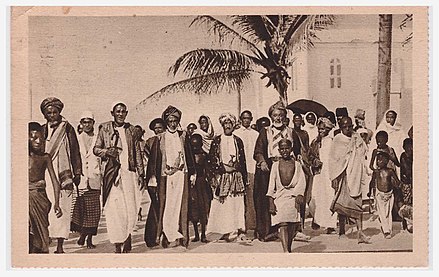Merca
[3] It is mentioned in the Periplus of the Erythraean Sea, a Greek travel document dating from the first century AD, as one of a series of commercial ports on the Somali littoral.
[4] According to the Periplus, maritime trade already connected peoples in the Merca area with other communities along the Somali Sea coast.
Later Arab writers also make references to the Hawiye clan in connection with both Merca and the lower Shabelle valley.
Yaqut al-Hamawi, another thirteen-century Arab geographer also mentions Merca, which he says belonged to the Black Berbers considered ancestors of modern Somalis.
Various pillar tombs exist in the region, which local tradition holds were built in the 15th century when the Sultanate's naa'ibs governed the district.
[7] According to Ibn Sa'id in the thirteenth century described nearby Merca as one of the three most important cities on the East African coast along with Mogadishu and Barawa all serving as the commercial and Islamic centers for the Indian Ocean.
According to an account collected by Guillain in 1847, a leader known as Amir, believed to originate from the Abgaal, formed a following or "tribe" which invaded the territory of Merca and expelled the Ajuran clan.
The Sultanate of Geledi tried to attack and destroy the Bimaal clan many times to try and capture the coastal city of Merca.
[15] Following the full outbreak of the Somali Civil War in 1991, Merca came under the control of Al-Itihaad Al-Islamiya, a Islamist group who soon after started governing the city.


